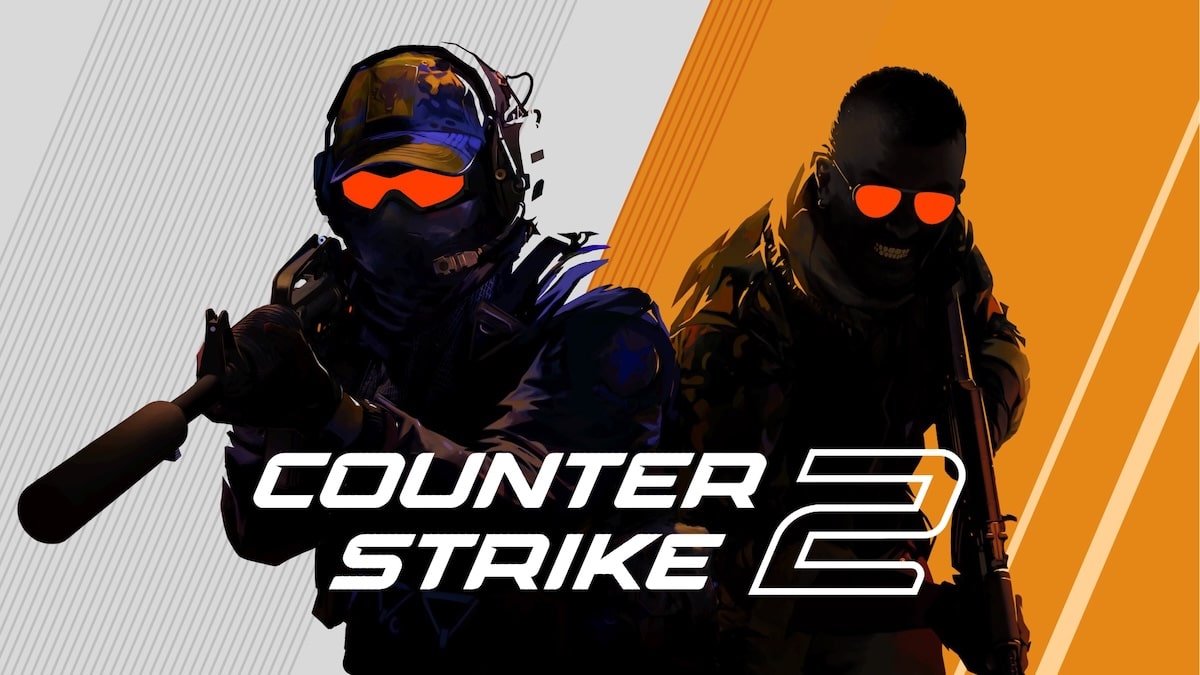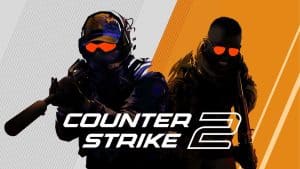Join Our Telegram channel to stay up to date on breaking news coverage
The esports betting market witnessed a seismic shift in 2024, with Counter-Strike 2 (CS2) cementing its supremacy by capturing 64% of the global esports betting market in Q4 – a record high that underscores its unrivaled appeal among bettors.
This dominance, detailed in Abios and Sharpr’s Global Esports Betting Monitor, reflects CS2’s optimized blend of competitive volatility, live engagement, and institutionalized tournament structures.
The game’s unprecedented market penetration has reshaped betting operators’ strategies, driving innovations in live wagering technology and prompting traditional sportsbooks to reconsider their allocation of resources toward esports verticals.
Key Takeaways
- Market Domination: Counter-Strike 2 commanded 64% of total esports betting volume in Q4 2024, up from 55% at the beginning of the year, while League of Legends remained a distant second at 26%.
- Tournament Impact: The Perfect World Shanghai Major alone generated 28% of Q4’s total esports betting handle, outperforming the League of Legends World Championship (19%).
- Live Betting Appeal: In-play wagering constitutes 46% of CS2 bets, driven by round-by-round volatility that creates multiple betting opportunities throughout matches.
- Demographic Shift: Gen Z (ages 18-27) now represents 44% of all esports bettors, with 52% of CS2 live bets placed via mobile devices during commutes or breaks.
- Operator Innovation: Sophisticated player prop offerings and multi-leg “Bet Builder” options have evolved to satisfy demand for complex wagering opportunities, with 30% of CS2 bets incorporating 5+ legs.
- Structural Advantages: CS2’s dense tournament calendar (30+ premier events annually) and standardized formats create an ecosystem optimized for betting, with more wagering entry points than competing titles.
- Future Challenges: Market saturation concerns persist, with 60% of CS2’s handle concentrated in just five tournaments, creating dependency risks for operators.
Market Dominance: Quarterly Growth and Competitive Landscape
From 55% to 64%: A Year of Ascendancy
In 2024, CS2 accounted for 55% of all esports wagers annually, peaking at 64% in Q4 following the Perfect World Shanghai Major. This remarkable trajectory eclipsed competing titles across all major betting markets:
- League of Legends (LoL): 26% annual share (+2% YoY)
- VALORANT: 5% share (+2% YoY)
- Dota 2: 10% share (-4% YoY)
“Counter-Strike has created the perfect storm for betting engagement,” explains Oskar Fröberg, CEO of Abios. “Its combination of short, intense rounds within longer matches creates ideal micro and macro betting opportunities that other titles simply cannot match.”
The game’s consistency stems from its dense tournament calendar – over 30 premier events annually – and standardized formats (Best-of-3 series, MR12 rounds) that enable precise odds modeling. According to proprietary Kambi Network data, CS2 matches generated $1.2B in handle during January 2025 alone, nearly triple VALORANT’s $430M.
Industry insiders attribute CS2’s accelerating market share to several converging factors: Valve’s 2023 engine upgrade increased viewership by 23%; the introduction of standardized map pools improved betting model accuracy; and the proliferation of third-party tournaments created year-round betting opportunities without seasonal lulls.
Erik Logdberg, Chief Business Development Officer at Kambi, notes: “Counter-Strike has essentially become the basketball of esports betting – high-scoring, consistently paced, and perfectly suited for live wagering across global markets. No other title delivers the same combination of betting volume and margin reliability.”
Live Betting and Player Props: The Engagement Engine
Live (in-play) betting constituted 46% of CS2 wagers in Q4 2024, compared to 28% for VALORANT and 63% for Dota 2. This significant percentage reflects CS2’s unique structural advantages for real-time engagement:
- Round-by-Round Volatility: CS2’s bomb-defusal mechanics create micro-opportunities for odds shifts, unlike LoL’s macro-oriented matches. With 24+ rounds per map, each lasting approximately two minutes, bookmakers can offer dozens of discrete betting markets within a single match.
- Player Prop Popularity: Bets on individual performance (e.g., “total kills by player”) comprised 13% of CS2 handles, aided by granular stats tracking. The popularity of player-focused markets has increased 87% year-over-year, coinciding with the rise of player-branded content and social media presence.
- Streaming Synergy: Platforms like Twitch integrate real-time odds via Kambi’s API, enabling viewers to bet during clutch moments. This integration reduces friction between viewing and betting, creating a seamless experience for fans.
Thomas Balistreri, VP of Trading at Pinnacle Sports, highlights the game’s inherent betting-friendly structure: “Counter-Strike offers natural betting breaks between rounds, allowing odds compilation in real-time without interrupting gameplay. This creates a natural cadence for bettors to process information and place informed wagers – something VALORANT has attempted to replicate but hasn’t quite matched.”
Bet Builder Adoption
Kambi’s Bet Builder tool, allowing multi-leg wagers (e.g., Map Winner + Player Kills + Round Total), saw 30% of CS2 bets incorporate 5+ legs in 2024 – up from 5% in 2021. This complexity aligns with Gen Z’s preference for customizable risk-reward scenarios.
“The same bettor who might place a simple match-winner bet on football often constructs elaborate multi-leg parlays for Counter-Strike,” explains Dr. Carsten Koerl, CEO of Sportradar. “We’ve observed average bet slip complexity increase by 47% for esports compared to traditional sports.”
The most popular Bet Builder combinations include:
- Map winner + total rounds (over/under) + first team to 5 rounds
- Player with most AWP kills + total kills (over/under) + team to win pistol round
- First half winner + knife round winner + map handicap
This trend toward complexity has pushed operators to invest in automated risk management systems capable of handling the computational demands of multi-outcome correlation.
The Shanghai Major Effect: A Case Study in Event Impact
Record-Breaking Handle
December 2024’s Shanghai Major attracted 28% of Q4’s total esports bets – surpassing the LoL World Championship (19%) and Dota 2’s Riyadh Masters (3%). This single tournament’s outsized impact demonstrates how premier CS2 events now drive industry-wide betting volumes.
Contributing factors to the Shanghai Major’s record-breaking performance included:
- Regional Incentives: Chinese betting platforms offered 20% bonus boosts for domestic teams like Lynn Vision, capitalizing on national pride and expanding the casual bettor base beyond core esports enthusiasts.
- Prime-Time Slots: Matches scheduled during European and North American evening hours maximized global participation, with concurrent viewership peaking at 1.7 million during the grand finals – 97% higher than the previous Major.
- Narrative-Driven Markets: Special odds on “Cinderella runs” (e.g., 1000:1 for underdog Apeks to reach playoffs) drove speculative bets. These story-driven markets attracted casual bettors who might otherwise ignore esports.
Pinnacle reported an average match handle of $3.4M during the event’s playoff stage – comparable to mid-tier European football league matches. “The Shanghai Major represents the maturation of esports betting,” notes Marco Blume, Pinnacle’s Trading Director. “It’s no longer accurate to view these events as niche – they’re mainstream betting products with mainstream liquidity.”
Tournament viewing patterns further reinforced CS2’s betting advantage: viewers watched an average of 41 minutes per session, significantly longer than VALORANT (27 minutes) or mobile esports titles (11-18 minutes). This extended engagement creates more opportunities for in-play betting decisions.
Demographic Dynamics: Gen Z and the Bettor Profile
Age and Behavioral Trends
CS2’s average bettor is 31 years old, straddling Millennial and Gen Z cohorts. However, Gen Z (ages 18–27) now dominates the betting demographic:
- 44% of all esports bettors in 2024.
- 52% of CS2 live bets placed via mobile devices during commutes or work breaks.
“We’re witnessing the emergence of an entirely new betting consumer,” observes Adam Savinson, Head of Esports at Betway Group. “The Gen Z bettor approaches wagering as a form of entertainment and social currency rather than pure profit-seeking. Their betting patterns reflect this: higher frequency, lower stakes, and greater focus on engagement than return.”
Gen Z’s preference for micro-betting (sub-$5 wagers) and social wagering (e.g., Discord group bets) has pushed operators to develop:
- TikTok-optimized interfaces: 15-second bet slips for “snackable” engagement, allowing users to place wagers with minimal friction and share outcomes on social platforms.
- Community Leaderboards: Public rankings for peer groups, incentivizing volume over stake size. These gamification elements transform betting from a solitary to a social activity.
- Custom Notification Systems: Alerts for specific player actions or team milestones that trigger predetermined bets, allowing passive participation during work or school hours.
The demographic shift extends beyond age to gender diversity. Female bettors now constitute 18% of CS2’s betting audience – a 7% increase since 2023. This expansion coincides with the growth of women’s CS2 competitions and female content creators focusing on the game.
Comparative Analysis: Why Counter-Strike Outperforms
[responsive_table mobile-labels=”2,3,4″]
| Factor | CS2 | LoL | VALORANT |
| Match Duration | 35–60 minutes | 25–45 minutes | 30–50 minutes |
| Betting Windows | 150+ per match (rounds, eco buys) | 50–70 (objectives, kills) | 80–100 (rounds, ultimates) |
| Tournaments/Year | 30+ | 15 | 20 |
| Top Event Share | 28% (Shanghai Major) | 19% (Worlds) | 3% (Champions) |
| Live Betting % | 46% | 32% | 28% |
| Mobile Betting % | 52% | 61% | 47% |
| Avg. Markets Per Match | 200+ | 120-150 | 90-110 |
[/responsive_table]
CS2’s shorter match length compared to Dota 2 (40–90 minutes) and higher round frequency than VALORANT create more entry points for bettors. Additionally, its open ecosystem (third-party tournaments like ESL Pro League) contrasts with Riot’s closed leagues, fostering year-round liquidity.
“Counter-Strike’s ecosystem allows for market equilibrium between major and minor events,” explains Scott Burton, CEO of FansUnite. “Unlike Riot’s titles where betting is concentrated in a few peak moments throughout the year, CS2 provides consistent opportunities across the calendar.”
The format advantages extend to viewing experience as well. CS2’s top-down spectator mode allows audiences to anticipate plays before they happen—creating a crucial information advantage for live bettors that games like League of Legends (with fog of war limitations) cannot match.
Beyond macro-structural elements, CS2’s economic system creates natural narrative arcs within matches:
- Economy Resets: Force buys, eco rounds, and full buys create predictable fluctuations in team strength that bettors can anticipate.
- Comeback Mechanics: The loss bonus system makes comebacks statistically more likely than in VALORANT, creating value opportunities in live betting markets.
- Map Specialization: Teams develop known strengths and weaknesses on specific maps, providing handicapping edges for informed bettors.
These elements combine to create what industry analysts term “perfect information asymmetry”—enough complexity to reward knowledge without overwhelming casual participants.
Regulatory and Technological Enablers
The technological infrastructure supporting CS2 betting has evolved substantially, with several key innovations driving market growth:
- Kambi’s Odds Feed+: AI-driven pricing for niche markets (e.g., “Pistol Round Winner”) reduced margin errors by 15% in 2024. This machine learning system incorporates player historical performance, team tendencies, and map-specific data to generate accurate odds for previously unpriceable markets.
- Abios Data Suite: Real-time stats integration allowed operators to offer 200+ concurrent CS2 markets, up from 80 in 2023. The expanded market depth enables bettors to leverage specific knowledge areas, from AWP specialists to economic strategy.
- Microbetting Infrastructure: Sub-second latency systems now process wagers on immediate outcomes like “next kill weapon type” or “bomb plant location,” expanding the potential engagement points within a single round.
According to Gustaf Thornell, Head of Esports at Abios: “The technical barriers to complex esports betting have largely disappeared. Five years ago, the latency between game state and betting platform made many of today’s markets impossible to offer. Now, with direct data feeds and optimized paths, we can price markets in milliseconds rather than seconds.”
Licensing Milestones
Kambi’s Q4 2024 partnerships with Hard Rock Digital (U.S.) and Rei do Pitaco (Brazil) expanded CS2 betting into newly regulated markets, contributing to 10.1% operator trading margins. These regulatory advancements reflect growing acceptance of esports betting as a mainstream vertical rather than a niche offering.
The U.S. market has seen particularly significant growth, with Nevada, New Jersey, and Colorado all expanding their approved esports betting catalogs to include CS2 tournaments. This regulatory evolution coincides with traditional sportsbooks allocating dedicated trading teams to esports – a previously reserved resource for major sports.
“The regulatory perception of Counter-Strike has evolved from skepticism to acceptance,” notes Susan Hensel, former Director of Licensing for the Pennsylvania Gaming Control Board. “Regulators now recognize that with proper oversight, esports betting can meet the same integrity standards as traditional sports.”
Tournament Ecosystem and Economic Impact
CS2’s tournament ecosystem has evolved specifically to maximize betting engagement:
- Standardized Formats: The adoption of uniform match formats (Bo3 series, MR12 rounds) across all tier-1 tournaments creates consistency for bettors and bookmakers alike.
- Qualifier Structure: Open qualifiers for major events generate betting interest in otherwise low-profile matches, extending the betting lifecycle of premium tournaments.
- Regional Balance: The global distribution of elite teams across Europe, North America, and Asia ensures prime-time matches for all major betting markets.
Tournament organizers increasingly optimize schedules to maximize betting engagement. The ESL Pro League, for example, staggered match start times at 15-minute intervals throughout 2024, enabling bettors to follow multiple matches simultaneously and recycle funds across events – a practice known as “action chasing” that increases total handle.
“Tournament organizers understand that betting engagement drives viewership,” explains Viktor Wanli, founder of Kinguin. “The alignment between competitive integrity and betting-friendly formats has reached near-perfect equilibrium in Counter-Strike.”
Economic Ripple Effects
CS2’s betting prominence has created economic opportunities beyond direct wagering:
- Content Ecosystem: Betting-focused content creators generated an estimated $42M in ad revenue across YouTube and Twitch in 2024, with specialized channels offering betting tips and analysis.
- Data Rights Value: Tournament organizers now generate 15-20% of revenue from official data partnerships with companies like Bayes Esports and Abios, who then distribute the data to betting operators.
- Team Sponsorships: Eight of the top 10 CS2 teams now feature betting operators as primary jersey sponsors, with deal values averaging $3.7M annually—a 40% premium over equivalent VALORANT team sponsorships.
The financial incentives have created a virtuous cycle where tournament organizers reinvest betting-derived revenue into production quality and prize pools, further enhancing viewer engagement and betting liquidity.
Challenges and Future Outlook
Despite CS2’s dominant position, several challenges threaten its long-term betting hegemony:
- Market Saturation: Over 60% of CS2’s handle comes from just 5 tournaments, raising dependency risks. This concentration creates significant volatility in monthly betting volumes and challenges operators’ ability to maintain consistent offerings.
- Integrity Pressures: Unregulated skin betting sites still account for $300M+ in annual CS2 handle, per Esports Integrity Commission reports. These gray market operators undermine regulatory confidence and create match-fixing incentives.
- Competition from VALORANT: Riot’s tactical shooter has implemented several CS2-inspired features specifically designed to enhance betting appeal, including standardized economy systems and improved spectator tools.
- Mobile Threats: Emerging mobile esports titles offer advantages in accessibility and emerging market penetration that CS2 cannot match. Titles like Mobile Legends: Bang Bang have captured significant betting share in Southeast Asia.
Industry consultant James Kieft warns: “Counter-Strike’s betting dominance shouldn’t be taken for granted. Riot Games is aggressively positioning VALORANT as a betting-friendly alternative with the advantage of centralized control over the competitive ecosystem -something Valve has historically avoided with CS2.”
Growth Projections
Despite these challenges, analysts forecast CS2 maintaining 55–60% market share through 2026, driven by:
- Mobile Expansion: PUBG Mobile-style adaptations for emerging markets could extend CS2’s reach into regions where PC penetration remains limited.
- Women’s Leagues: ESL’s planned 2025 Women’s CS2 Circuit aims to capture 15% female bettor demographics. The eight-team league will feature $2M in prize money and dedicated broadcast slots.
- Tournament Innovation: New formats like the “Overtime Series” will showcase 1v1 and 2v2 variants optimized for mobile viewing and betting, potentially capturing audience segments who find traditional 5v5 matches too lengthy.
- Payment Integration: Direct Steam Wallet integration for betting deposits will reduce friction in core markets, potentially converting casual viewers into first-time bettors.
These innovations point to an ecosystem actively evolving to maintain its betting relevance rather than resting on current dominance.
Wrapping Up: Ready to Rush B?
Counter-Strike’s betting dominance stems from structural synergies – its cadence of high-stakes tournaments, granular in-play markets, and Gen Z’s demand for kinetic engagement. While VALORANT and mobile esports loom as disruptors, CS2’s entrenched ecosystem and operator innovations position it as the lodestar of esports wagering.
The title’s 64% market share represents more than statistical supremacy – it signals esports betting’s maturation into a mainstream vertical with dedicated resources, technological infrastructure, and regulatory frameworks. CS2 has effectively become the template against which all esports betting products are measured, forcing competitors to adapt their formats and presentation to match its betting-friendly structure.
For traditional sportsbooks, CS2’s rise represents both opportunity and challenge: those who have invested in esports-specific capabilities have accessed a growing demographic largely disconnected from conventional sports betting, while those maintaining token esports offerings risk irrelevance as specialized operators capture market share.
As Pinnacle’s Marco Blume summarizes: “Counter-Strike didn’t accidentally become the dominant esports betting product – it earned that position by creating perfect alignment between competitive integrity, spectator experience, and betting opportunity. The question isn’t whether CS2 will maintain its leadership position, but rather which competitor will most successfully replicate its formula.”
The game’s future betting prominence will ultimately depend on balancing institutional partnerships with integrity safeguards, ensuring the title remains synonymous with both competitive excellence and betting reliability. As esports betting continues its exponential growth trajectory, Counter-Strike’s position at the center of this ecosystem appears secure – at least for now.
Sources
- Latest Abios esports betting report highlights Counter-Strike’s dominance
- Counter-Strike Continues to Strongly Dominate the Esports Betting Market
Join Our Telegram channel to stay up to date on breaking news coverage


